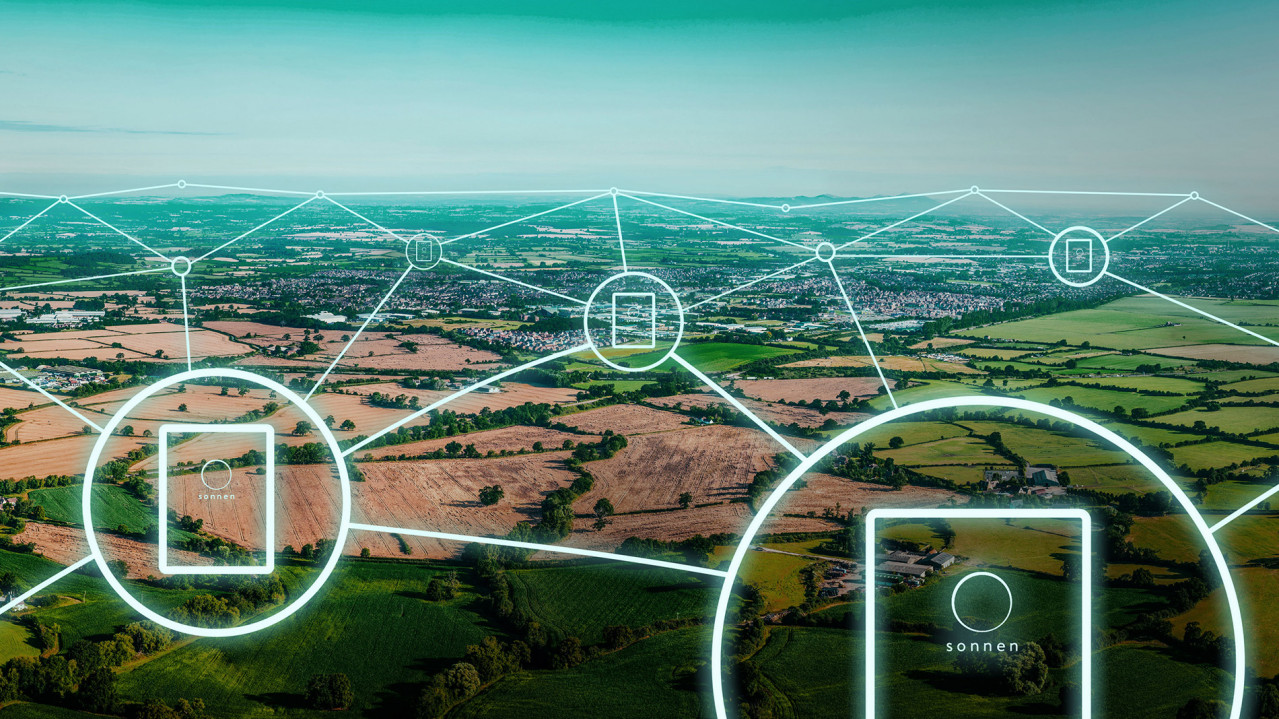
What is a virtual power plant (VPP)?
Making VPP's simple to understand for homeowners
Just as the world is starting to get used to three letter technology acronyms such as IoT (Internet of Things), CMS (Content Management System), BMS (Battery Management System) to Application Program Interface (API), the energy industry has flung another acronym “VPP” around at industry events and in general news stories.
In my conversations with installer partners, I’m sometimes asked what is a VPP and how do they engage customers in a conversation around the benefits of a VPP. I thought this would be a great chance to share my thoughts on what a VPP is, how it impacts the energy market and how do households get involved.
In a nutshell, a VPP is a virtual power plant that generates or distributes electricity via bringing together a volume of small interconnected home batteries which are connected through a cloud platform just like the internet and can be controlled virtually.
Not all VPPs are created equal
We are seeing lots of trials for VPPs in Australia, with a ‘product indifferent’ VPP different manufacturers can all work with aggregator and energy retailer to demonstrate how a VPP can function within a range of different vendor battery technologies.
A good example of a ‘product indifferent’ VPP would be the Simply Energy platform which sonnen is involved in as part of their VPP trial in South Australia. For this project, they act as a functional aggregator for the VPP. The aggregator only looks at battery brands as part of systems which can communicate with their controller for functions to enable the energy trading.
We also have VPPs that are based on a ‘single manufacturers’ technology, for example, with sonnen, we have the sonnenCommunity which acts as a single aggregator for a VPP to allow our customers to store and share their electricity with others in the sonnenCommunity. The advantage of operating a sonnen VPP is the ability to operate, optimise and execute energy sharing capabilities with greater visibility and stability.
Currently, VPP’s operate in Australia with the aim of selling to the spot market when the price of excess energy is high and to purchase energy when the prices are low. This is where sonnen is different as we’ve built an energy sharing platform which is focused on buying and/or selling energy which is only open to customers within our community.
The backbone of a good VPP
There is a perception that a good VPP is built based on hardware technology which is for the most part incorrect. Data and latency are two of the biggest issues we need to address to get a VPP working and this comes down to having a good internet connection to facilitate it. This means helping customers understand they will need to have a reliable internet connection to participate and benefit from a VPP.
The geographical size of Australia and the connectivity speeds in some regions could prove to be a challenge to manage a VPP. Any latency issues could prevent an aggregator from getting full visibility on the home batteries that are connected to its VPP or ensure the fast response rates which are often required.
Instead of relying on two-way communications where massive amounts of data are transmitted between an aggregator from a home battery, sonnen has created an artificial intelligence (AI) script that detects any small changes in the frequency to ‘tell’ a battery to sell or charge. This is recorded as transaction data which is sent back to sonnen.
Rather than relying on an internet connection to send five signals to an aggregator, the sonnenCommunity only requires one signal to be sent to confirm in a single transaction of how much energy has been either bought or sold within our community. Using an AI script for our VPP, sonnen makes our VPP more secure, reliable and trustworthy as all transactions are accurately recorded by a set of rules.
What do we need to build a VPP
A VPP can only operate if it’s connected to a market in order to be a participant and it needs to be a system that is remotely controllable, configured and to be able to send and receive information rapidly. The sonnenCommunity is an example of a market where we connect systems to allow energy trading to take place.
Fundamentally, only two types of batteries can operate in a VPP – the smart batteries that will take a command and the intelligent batteries that will make decisions on their own. I believe we have an equal split between smart and intelligent batteries that are currently installed in Australia that will qualify and can participate in a VPP.
For installers, helping customers understand they should future proof their investment in home batteries by choosing smart or intelligent batteries as their first towards participating in a VPP.
Balancing value and risk
There is a financial incentive for homeowners to participate in a VPP and this is a selling point for installers to engage customers in a conversation when it bridges into the ROI of a home battery. Being able to trade energy provides a better return on investment and indirectly, being part of a VPP benefits everyone as less grid electricity, which predominantly generated by fossil fuels, is used.
Not all home batteries that connect to a VPP operate in the same way. Installers need to help customers learn about risks such as whether data is encrypted and securely transmitted to an industry standard and the VPP networks they participate in are protected against cyberattacks.
Customers need to look at the warranty cycle count or energy throughput of their home batteries to ensure they will not exceed the charging cycles when invoked by an aggregator to gain financial benefits from a VPP during peak energy demand hours.
The sonnen VPP operates as an ISO-certified system and acts like an intranet with connected home batteries. This provides an additional layer of security for data that is transmitted and stored giving our customers the confidence to participate in the sonnenCommunity.
The sonnen advantage
Installers can position sonnenBatteries as the right solution for customers who want to be part of an established VPP, the sonnenCommunity, which has been running in Australia since 2018.
The other key advantages with the sonnenBatterie are that it’s designed for grid services and has a warranty to support 2.7 full cycles per day. I believe no other home battery currently sold in Australia has this competitive advantage.
Helping customers cross the bridge into getting home batteries takes a significant amount of education. But the advantage of helping them understand what a VPP can do for their household has been undersold. I’m happy to take further questions on this so please feel free to email me or leave a comment below.
If you are attending the Clean Energy Summit in Sydney, Australia on 31 July 2019, I will be speaking on a panel “Power Sharing: The Emergence of Virtual Power Plants and Battery Swarms” and look forward to meeting you in person.
By James Sturch
Technical Director / Australia & New Zealand at sonnen Australia
Join the thousands of Australian households who’ve opened the door to a more self-sufficient and energy-independent future with a solar battery. To get started on your energy independence journey, explore the sonnen product range, including the sonnenBatterie Evo, and the home battery schemes that provide rebates, subsidies or interest-free loans to households who intend to install solar batteries.
Also, be sure to use our free online energy savings calculator to see your estimated savings over a 10-year period.







